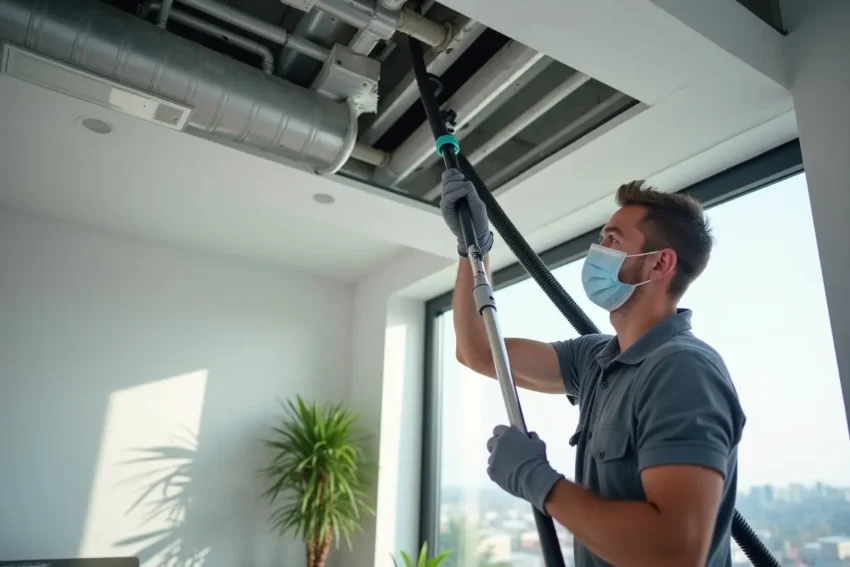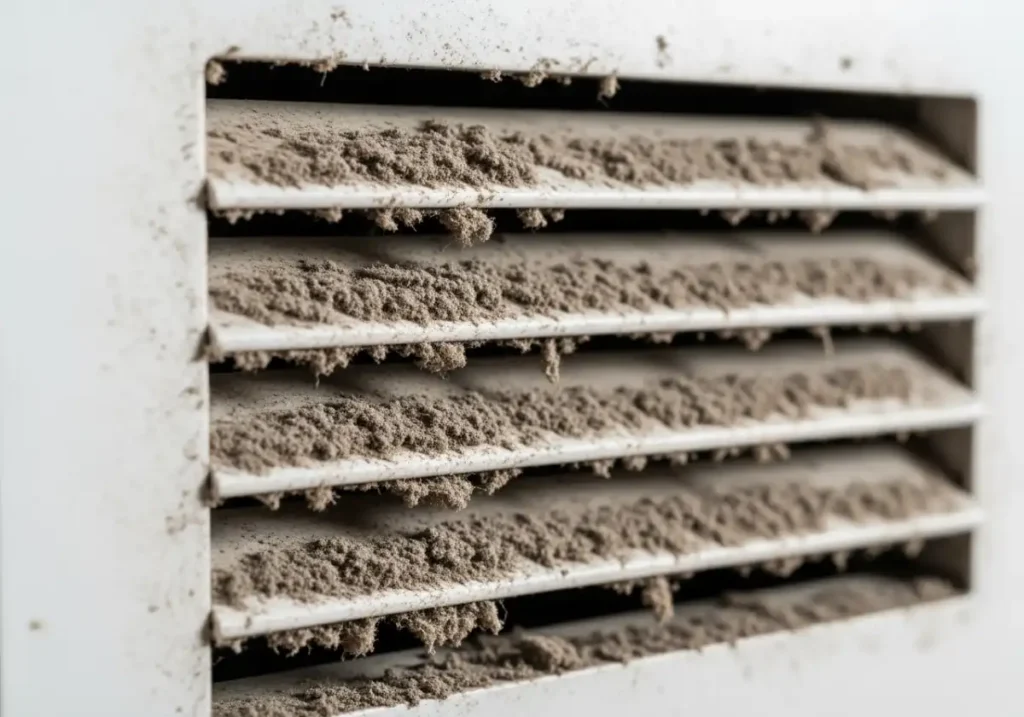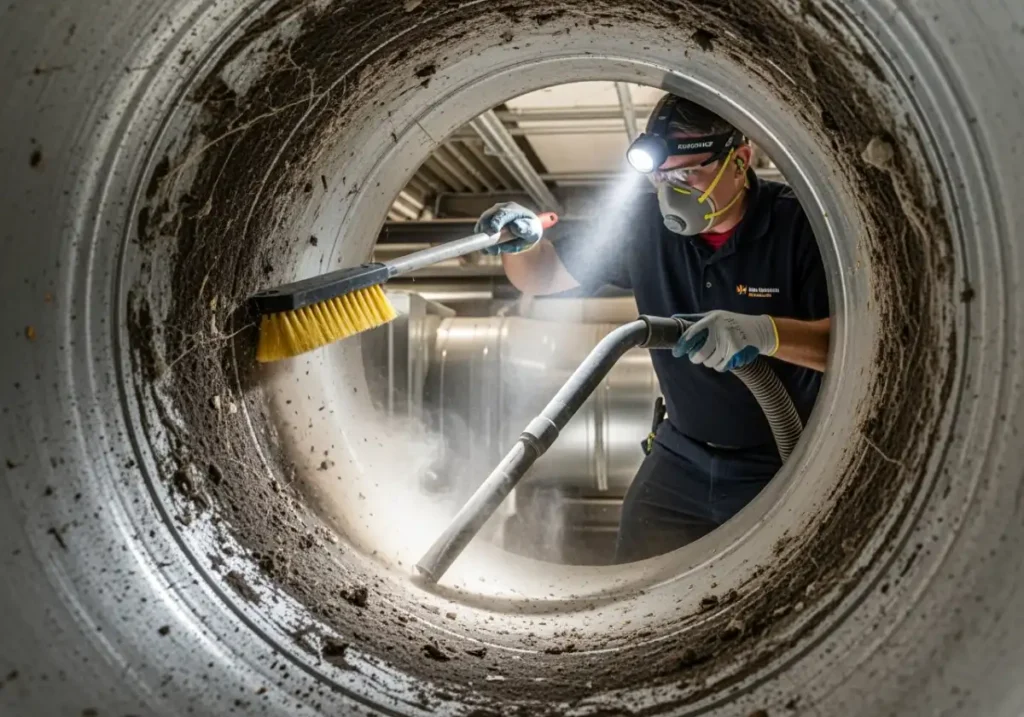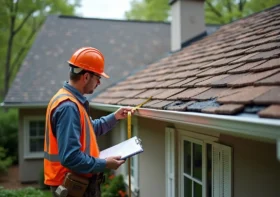Dust-Free Living Starts Here: Your Guide to Cleaner Air Ducts

Our home’s air ducts are the circulatory system of our HVAC unit, distributing conditioned air throughout our living spaces. Over time, these ducts can accumulate a significant amount of dust, debris, allergens, and even mold or pests. In fact, in just one year, a typical home can collect more than 40 pounds of dirt, dust, and particles.
While a light amount of household dust in your air ducts is normal and generally poses no health risk, certain situations warrant professional air duct cleaning. The U.S. Environmental Protection Agency (EPA) and the National Air Duct Cleaners Association (NADCA) provide guidelines to help homeowners decide when cleaning is appropriate.
These organizations emphasize that air duct cleaning is not a routine maintenance task for most homes. However, specific indicators—such as mold growth, vermin infestation, or significant debris from post-renovation activities—can signal a clear need for professional intervention.

Contents
- 1 Signs It’s Time for a Cleaning
- 2 How Often Should Ducts Be Cleaned?
- 3 When Air Duct Cleaning May Be Unnecessary
- 4 The Professional COIT Air Duct Cleaning Process and What to Expect
- 5 Costs, Scams, and Additional Services Explained
- 6 Maintaining Your Ducts and Indoor Air Quality
- 7 Frequently Asked Questions about Air Duct Cleaning Services
- 8 Conclusion
Signs It’s Time for a Cleaning
Knowing when your air ducts require professional attention can help prevent potential health issues and maintain your HVAC system’s efficiency. Here are the key indicators that suggest it’s time for an air duct cleaning:
- Visible Mold Growth: If you see visible mold growth inside your air ducts or on other components of your heating and cooling system, cleaning is strongly recommended. It’s crucial to address the cause of the mold growth, such as a moisture problem; otherwise, it will recur. If you have insulated air ducts and the insulation gets wet or moldy, it cannot be effectively cleaned and should be removed and replaced.
- Musty Odors: A persistent musty odor emanating from your vents when the HVAC system is running can indicate mold or mildew growth within the ductwork. If moisture is present, the potential for microbiological growth (e.g., mold) is increased, and spores from such growth may be released into your home’s living space.
- Pest Infestation: Evidence of rodents, insects, or other vermin inhabiting your ductwork is a clear sign that cleaning and remediation are necessary. These pests can leave behind droppings, nesting materials, and other contaminants that can be circulated throughout your home.
- Excessive Dust from Vents: While some dust around return registers is normal, if you notice significant amounts of dust and debris being released into your home from the supply registers, your ducts are likely clogged with contaminants.
- Unexplained Allergy or Respiratory Symptoms: If residents in your home are experiencing unexplained allergy-like symptoms, asthma flare-ups, or other respiratory issues that seem to improve when away from home, dirty air ducts could be a contributing factor. Some of these contaminants may cause allergic reactions or other symptoms in people if they are exposed to them.
How Often Should Ducts Be Cleaned?
There’s no universal recommendation for how often air ducts should be cleaned, as it largely depends on your specific circumstances. NADCA generally recommends cleaning air ducts every three to five years. However, several factors might necessitate more frequent cleaning:
- After Home Renovations: Construction or remodeling work can introduce significant dust, debris, and particles into your HVAC system. Sealing off supply and return registers and not operating the system during such work can help, but a cleaning afterward is often beneficial.
- Homes with Pets: Pet dander and hair can accumulate quickly in ductwork, especially if you have multiple pets or pets that shed heavily.
- Occupants with Asthma or Allergies: Individuals suffering from allergies, asthma, or other respiratory conditions may benefit from more frequent cleaning to reduce airborne irritants.
- Smoking in the Home: Tobacco smoke residues can adhere to duct surfaces, contributing to indoor air pollution.
- Water Contamination: If your ducts have been exposed to water or moisture (e.g., from a leak or flood), mold growth may occur.
- Moving into a New Home: If you’ve just moved into a new home, especially an older one, you might consider having the ducts inspected and cleaned, as you won’t know the history of the previous occupants or maintenance.
When Air Duct Cleaning May Be Unnecessary
Despite the marketing claims you might encounter, air duct cleaning is not always necessary. The EPA states that duct cleaning is not considered an essential part of yearly maintenance of your heating and cooling system. There are several situations where cleaning your air ducts is probably unnecessary:
- No Visible Contamination: If, after a visual inspection of the inside of the ducts (which can often be done by removing a register and inspecting with a flashlight), you see no indication of large dust or mold deposits, cleaning is likely not needed.
- No Allergy or Illness Symptoms: If no one in your household suffers from allergies or unexplained symptoms or illnesses that could be linked to indoor air quality.
- Light Household Dust: It is normal for the return registers to get dusty as dust-laden air is pulled through the grate. A light amount of household dust in your air ducts is normal, and there is no evidence that it poses any risk to your health. Studies also do not conclusively demonstrate that particle levels (e.g., dust) in homes increase due to dirty air ducts. Much of the dirt adheres to duct surfaces and does not necessarily enter the living space.
- As part of Routine Annual Maintenance, do not hire duct cleaners who recommend duct cleaning as a routine part of your heating and cooling system maintenance. While research continues to evaluate the potential benefits, it’s not a universally recommended annual service. Pollutants that enter the home both from outdoors and indoor activities, such as cooking, cleaning, smoking, or just moving around, can cause greater exposure to contaminants than dirty air ducts.
The Professional COIT Air Duct Cleaning Process and What to Expect
When you decide that air duct cleaning is necessary for your home, understanding the professional process is crucial. A thorough cleaning goes beyond just vacuuming visible dust. It involves a comprehensive approach to cleaning all components of your HVAC system, ensuring contaminants are removed rather than redistributed.
This is vital because failure to clean a component of a contaminated system can result in the entire system being recontaminated, negating any potential benefits. Professional air duct cleaning services, such as the certified air duct cleaning offered by COIT, use specialized equipment and adhere to industry standards to ensure a thorough and effective cleaning.
This typically involves using powerful vacuum systems, often with HEPA filtration, in conjunction with agitation tools to dislodge contaminants. The goal is to create negative air pressure within the ductwork, pulling loosened debris directly into a containment unit rather than releasing it into your home.
The Step-by-Step Cleaning Method
A professional air duct cleaning service follows a methodical approach to ensure every accessible part of your HVAC system is thoroughly cleaned.
- Initial Inspection: Our technicians begin with a thorough inspection of your HVAC system and ductwork. This helps identify the extent of contamination, the type of ductwork, and any specific concerns, such as mold or pest infestations. Some providers may offer a video inspection to show you the condition of your ducts before and after cleaning.
- System Preparation and Sealing: Before cleaning begins, our team will prepare your home and HVAC system. This includes laying down drop cloths to protect flooring and furniture, and sealing off supply and return registers to create a closed system. This prevents contaminants from escaping into your living space during the cleaning process.
- Creating Negative Pressure: A powerful, truck-mounted or portable vacuum system is connected to your main supply and return duct lines. This vacuum creates negative pressure within the ductwork, drawing all dislodged contaminants towards the vacuum and out of your home. An inadequate vacuum collection system can release more dust, dirt, and other contaminants than if you had left the ducts alone.
- Agitation and Source Removal: While the vacuum is running, various agitation tools are used to dislodge debris from the interior surfaces of your ducts. These tools can include rotating brushes, air whips, and specialized nozzles, which are inserted into each duct run. This process ensures that stubborn dirt, dust, and other particles are thoroughly loosened from the duct walls. For optimal results, professionals use well-controlled brushing of duct surfaces in conjunction with contact vacuum cleaning to dislodge dust and other particles. For fiberglass duct board and internally lined sheet metal ducts, only soft-bristle brushes are used to prevent damage.
- Cleaning HVAC Components: Beyond the ductwork itself, a comprehensive cleaning includes other essential HVAC components. This involves cleaning the blower motor and assembly, evaporator coils, and drain pan. These areas are often significant dust and moisture collectors, making their cleaning critical for overall system hygiene and efficiency.
- Post-Cleaning Inspection and Sealing: After the cleaning is complete, our technicians will perform a final visual inspection to ensure all components are visibly clean. Any access holes made during the process are properly sealed and re-insulated to maintain airtight integrity.

What to Expect from a Reputable Provider
Choosing a reputable air duct cleaning service is paramount to a successful and safe cleaning experience. Here’s what you should expect from a professional provider:
- Written Estimates: A trustworthy company will provide a detailed written estimate before any work begins, outlining the scope of work, services included, and the total cost. This helps prevent unexpected charges.
- Home Protection: Reputable technicians will take precautions to protect your home and furnishings from dust and debris during the cleaning process. This includes using drop cloths and shoe covers.
- Adherence to Industry Standards: The best providers follow the standards set by industry associations like NADCA. These standards ensure a thorough and effective cleaning process. For example, NADCA’s standards emphasize source removal, meaning contaminants are physically removed from the system. Our technicians, like those providing Certified air duct cleaning services, are trained to follow these rigorous guidelines.
- Proper Sealing of Access Holes: If access holes are created in your ductwork for cleaning, a professional service will properly seal and re-insulate them to prevent air leaks and maintain system efficiency. A careless or inadequately trained service provider can damage your ducts or heating and cooling system, possibly increasing your heating and air conditioning costs or forcing you to undertake difficult and costly repairs or replacements.
- Qualified Technicians: Expect technicians who are trained, knowledgeable, and respectful. They should be able to answer your questions and explain the process clearly.
How to Verify a Thorough COIT Air Duct Cleaning Job
After the cleaning is complete, it’s important to verify that the job was done thoroughly and correctly. Here’s a checklist to help you assess the quality of the service:
- Visibly Clean Components: All cleaned portions of the system, including the inside of ducts, registers, grilles, and accessible HVAC components (such as the furnace fan and coils), should be visibly clean. You should not be able to detect any debris with the naked eye.
- No Debris at Registers: Check all supply and return registers for any residual dust or debris. A thorough job means no contaminants were left behind or blown into your living space.
- System Operates Correctly: Your heating and cooling system should operate normally, with no unusual noises or changes in airflow.
- Properly Sealed Access Holes: Inspect any access holes that were made in your ductwork. They should be securely sealed and insulated, showing no signs of air leakage.
- Before-and-After Photos/Video: Many professional services provide before-and-after photos or video footage of the ductwork, which can be an excellent way to confirm the effectiveness of the cleaning visually.
- No Strong Chemical Odors: While some sanitizers might have a temporary mild scent, there should be no strong, lingering chemical odors after the cleaning, especially if biocides were used.
Costs, Scams, and Additional Services Explained
Navigating air duct cleaning can be complex, especially when considering costs, potential scams, and the array of additional services offered. Understanding these aspects is key to making an informed decision and protecting your investment.
Understanding Air Duct Cleaning Costs
The cost of air duct cleaning can vary significantly, generally ranging from $450 to $1000, according to NADCA and the EPA. Several factors influence the final price:
- System Size: This is often the biggest determinant. Larger homes with more square footage and more vents and return registers will naturally cost more to clean. The number of air handling units also plays a role.
- Ductwork Type: The material and construction of your ductwork (e.g., sheet metal, fiberglass, flex duct) can affect the cleaning method and time required, thus impacting the cost.
- Accessibility: Ducts that are difficult to access (e.g., in tight crawl spaces, attics, or behind finished walls) may increase labor costs.
- Level of Contamination: Heavily contaminated ducts with significant mold growth, pest infestations, or excessive debris will require more intensive cleaning procedures, increasing the overall cost.
- Geographic Location: Prices can vary by region due to labor costs and market competition.
Common pricing structures include:
- Per-Vent Pricing: Some companies charge a flat rate per vent or register.
- Square-Footage Pricing: The cost may be based on your home’s total square footage.
- Flat-Fee Structures: A single price for the entire job, often with a disclaimer for extreme contamination or additional services.
How to Avoid Common Scams
Unfortunately, the air duct cleaning industry has its share of unscrupulous operators. Being aware of common scams can help you choose a reputable provider:
- Low-Price Bait-and-Switch: Be extremely wary of advertisements for “whole-house air duct cleaning” for incredibly low prices, such as $99 or less. These are often bait-and-switch tactics. Once on-site, these companies may claim to find severe issues (mold, asbestos, etc.) and pressure you into paying for unnecessary, expensive additional services. A reputable company will provide a realistic estimate up front.
- Unsubstantiated Health Claims: Do not hire duct cleaners who make sweeping claims about the health benefits of duct cleaning; in most cases, such claims lack scientific evidence. While some individuals with specific sensitivities may experience benefits, broad health claims are a red flag.
- Lack of Transparency: A legitimate company should be transparent about its cleaning process, equipment, and pricing. They should be able to show you the contamination before and after cleaning.
- No References or Certifications: Always check references and ensure the company is certified by reputable organizations, such as NADCA. You can use NADCA’s website to find a professional cleaner near you.
- High-Pressure Sales Tactics: Avoid companies that use high-pressure sales tactics, try to scare you into immediate service, or demand cash payments.
- Routine Maintenance Claims: Do not hire duct cleaners who recommend routine duct cleaning as part of your heating and cooling system maintenance, unless there are specific reasons (like pets or allergies) that warrant it.
Optional Add-Ons and Their Purpose
Beyond basic air duct cleaning, many companies offer additional services. Understanding their purpose and necessity is important:
Dryer Vent Cleaning
This is highly recommended and often crucial. A dryer vent filled with lint and debris is a fire hazard and should be taken seriously. Millions of dollars in insurance claims have been filed in Canada due to dryer vent fires. Regular professional dryer vent cleaning helps prevent fires, improves dryer efficiency, and reduces energy consumption. You can learn more about preventing these hazards from organizations like the NFPA.
Sanitizers and Biocides
Some companies offer to apply chemical treatments, such as sanitizers or biocides, to the inside of your ducts to kill bacteria, mold, and other microbes. While a small number of products are currently registered by EPA specifically for use inside bare sheet-metal air ducts, no products are registered by EPA as biocides for use on fiberglass duct board or fiberglass-lined ducts.
There remains considerable controversy over the necessity and wisdom of introducing chemical biocides or ozone into the ductwork, as some people may react adversely, leading to adverse health effects. It is a violation of federal law to use a pesticide product in any manner inconsistent with the label directions.
Always ask for the EPA registration number and product label, and understand the pros and cons before agreeing to such treatments. For more information on biocides, you can consult the EPA’s resources on regulating antimicrobial pesticides.
Duct Sealants/Encapsulation
Manufacturers of products marketed to coat and encapsulate duct surfaces claim that these sealants prevent dust and dirt particles inside air ducts from being released into the air. However, most organizations concerned with duct cleaning, including the EPA, NADCA, and the North American Insulation Manufacturers Association (NAIMA), do not currently recommend the routine use of sealants to encapsulate contaminants in any duct.
Little is known about the potential toxicity of these products, and sealants should never be used on wet duct liner, to cover actively growing mold, or to cover debris in the ducts. They should only be applied after proper cleaning.
Maintaining Your Ducts and Indoor Air Quality
Beyond professional cleaning, proactive measures can significantly reduce duct contamination and improve overall indoor air quality. A clean system not only supports a healthier living environment but can also potentially improve the efficiency of your HVAC unit.
Best Practices for Preventing Duct Contamination
Prevention is often the best strategy for maintaining clean air ducts and good indoor air quality. Here are some best practices:
- Use High-Efficiency Air Filters: Install the highest efficiency air filter recommended by your heating and cooling system’s manufacturer. Be sure there are no missing filters and that air cannot bypass the filters through gaps around the filter holder. Change or clean filters regularly, especially if they become clogged.
- Control Moisture: Controlling moisture is the most effective way to prevent biological growth (like mold) in all types of air ducts. Promptly and properly repair any leaks or water damage in your home, especially near HVAC components. Ensure the condensate pan in your HVAC system drains properly. If humidifiers are used, they must be properly maintained.
- Seal and Insulate Ducts: Make sure ducts are properly sealed and insulated in all non-air-conditioned spaces (e.g., attics and crawl spaces). Sealing duct air leaks can help reduce heating and cooling bills. For more information, you can visit the EPA’s Energy Star website.
- Seal Registers During Renovation: During construction or renovation work that produces dust in your home, seal off supply and return registers and do not operate the heating and cooling system until after the dust has been cleaned up.
- Regular Cleaning: Clean your home regularly to minimize dust and debris that can enter your HVAC system. Use a high-efficiency vacuum (HEPA) cleaner, or use the highest-efficiency filter bags your vacuum cleaner can take.
- Maintain HVAC System: Have your heating and cooling system regularly maintained or inspected. Ask the service provider to clean cooling coils and drain pans, as these can accumulate dirt and moisture. Air handling units should be constructed so that maintenance personnel have easy, direct access to heat exchange components and drain pans for proper cleaning and maintenance.
- Fuel-Burning Appliances: If you have a fuel-burning furnace, stove, or fireplace, ensure they are inspected for proper operation and serviced before each heating season to help prevent carbon monoxide poisoning.
The Potential Health Benefits of a Clean System
While the EPA notes that duct cleaning has never been shown to prevent health problems, and studies do not conclusively demonstrate that particle levels in homes increase because of dirty air ducts, there are scenarios in which cleaning can contribute to a healthier indoor environment, especially for sensitive individuals.
Reduced Allergy and Asthma Triggers
Dirty air ducts can harbor common allergens, including pollen, pet dander, dust mites, and mold spores. For individuals with allergies or asthma, reducing exposure to these triggers can alleviate symptoms and improve respiratory comfort. The U.S. Environmental Protection Agency (EPA) estimates that indoor air is 2 to 4 times more polluted than outdoor air, largely due to confined spaces and accumulated contaminants.
Removal of Contaminants
In cases of significant contamination—such as mold growth, pest infestations, or excessive dust from renovations—cleaning removes these materials that could otherwise be distributed throughout the home. There are examples of ducts that have become badly contaminated with a variety of materials that may pose risks to your health. Some of these contaminants may cause allergic reactions or other symptoms in people if they are exposed to them.
Improved Indoor Air Quality
While not a panacea, a thorough cleaning, particularly when combined with other best practices for indoor air quality (like proper filtration and moisture control), can contribute to a fresher, cleaner-smelling home environment.
Pollutants that enter the home, whether from outdoors or from indoor activities such as cooking, cleaning, smoking, or just moving around, can cause greater exposure to contaminants than dirty air ducts. Cleaning ducts can be one part of a holistic approach to managing these exposures. For more comprehensive information on indoor air quality, refer to the EPA’s resources.
Frequently Asked Questions about Air Duct Cleaning Services
Are chemical biocides or sealants necessary?
The use of chemical biocides or sealants in air ducts is a contentious issue. The EPA generally does not recommend its routine use.
- Biocides: Chemical agents designed to kill biological contaminants, such as mold and bacteria. While the EPA registers some biocides for use on the smooth surfaces of unlined (bare) sheet-metal ducts, no products are currently registered for use on fiberglass duct board or fiberglass-lined ducts. There remains considerable controversy over their necessity and wisdom, as little research has demonstrated their effectiveness inside ducts, and some individuals may react negatively to them. It is a violation of federal law to use a pesticide product in any manner inconsistent with the label directions.
- Sealants: These products claim to encapsulate contaminants, preventing them from being released into the air. However, organizations such as the EPA, NADCA, and NAIMA do not currently recommend routine use. Little is known about their potential toxicity or long-term durability, and they should never be used on wet or moldy ducts or to cover debris.
Can improper cleaning damage my ducts?
Yes, improper air duct cleaning can indeed damage your ductwork and HVAC system, potentially leading to increased indoor air quality issues and higher energy costs.
- Damage to Ductwork: Careless or inadequately trained service providers can damage your ducts, especially those made of fiberglass duct board or internally lined with fiberglass. These materials require soft-bristled brushes. Flexible ducts are also susceptible to damage if not handled properly. If the ductwork is damaged, it can lead to air leaks, reducing system efficiency and potentially requiring costly repairs.
- Releasing Contaminants: An inadequate vacuum collection system or improper cleaning techniques can release more dust, dirt, and other contaminants into your home than if you had left the ducts alone. This can worsen indoor air quality rather than improve it.
- System Malfunctions: Improper cleaning of HVAC components, such as coils or the blower motor, can lead to malfunctions, shorten system lifespan, and increase heating and cooling costs.
Will cleaning my air ducts lower my energy bills?
While some companies claim that air duct cleaning will significantly lower your energy bills, the evidence is not always conclusive.
- Ducts-Only Cleaning: Little evidence indicates that simply cleaning the duct system will increase your system’s efficiency. The primary function of ducts is to transport air, and a light layer of dust typically doesn’t impede airflow enough to affect energy consumption significantly.
- Full System Cleaning: However, if other components of your HVAC system, such as cooling coils, fans, and heat exchangers, are dirty, cleaning these can improve the efficiency of your heating and cooling systems. These components are critical for heat transfer and airflow, and heavy accumulation of dirt can force your system to work harder, consuming more energy.
- Sealing Air Leaks: A more impactful way to lower energy bills related to ductwork is to ensure your ducts are properly sealed and insulated. Leaks in ductwork can lead to significant energy loss as conditioned air escapes into unconditioned spaces (like attics or crawl spaces).
Therefore, while air duct cleaning might contribute marginally to energy efficiency if other system components are heavily soiled, it’s generally not the primary reason to have your ducts cleaned. Focus on proper system maintenance, filtration, and sealing duct leaks to achieve greater energy savings.
Conclusion
Understanding air duct cleaning services is about making informed decisions for your home and your family’s health. While it’s not a routine annual task for most, specific indicators like visible mold, pest infestations, or excessive dust after renovations can signal a clear need. We’ve explored the professional cleaning process, what to expect from a reputable provider, and how to verify the job’s thoroughness. We’ve also dug into the financial aspects, common scams to avoid, and the purpose of additional services like dryer vent cleaning, which is crucial for fire safety.
Maintaining your ducts and improving indoor air quality involves a combination of professional cleaning when necessary and consistent best practices like using high-efficiency filters and controlling moisture. Choosing qualified professionals who adhere to industry standards is paramount to ensuring a safe and effective cleaning. By taking a proactive approach and understanding the nuances of air duct maintenance, you can contribute to a healthier living environment for everyone under your roof.



